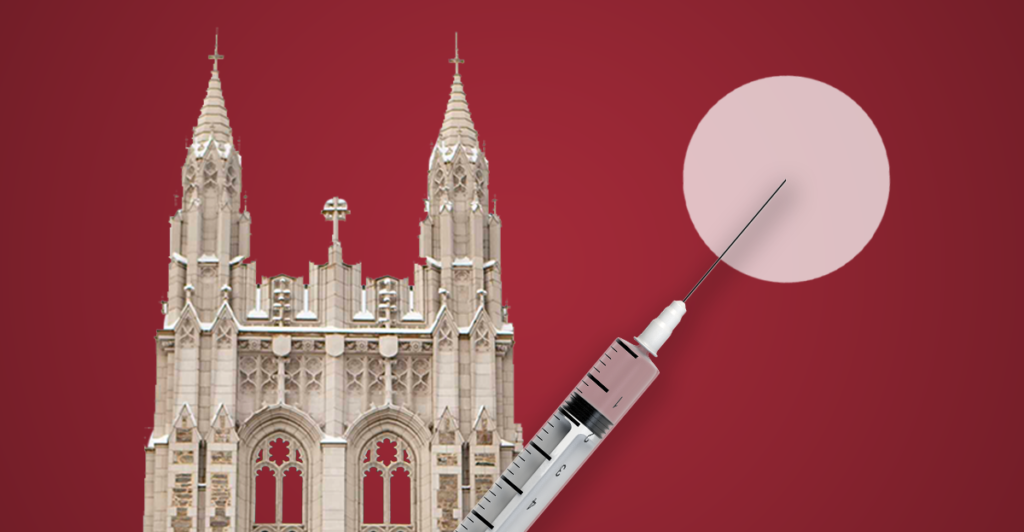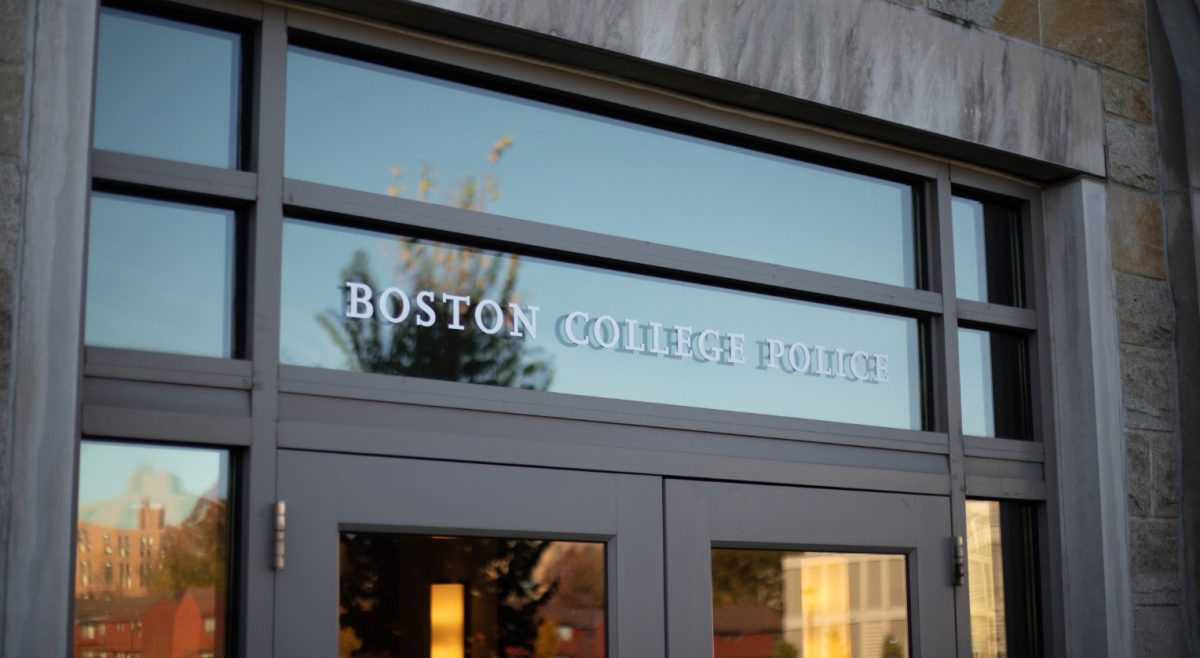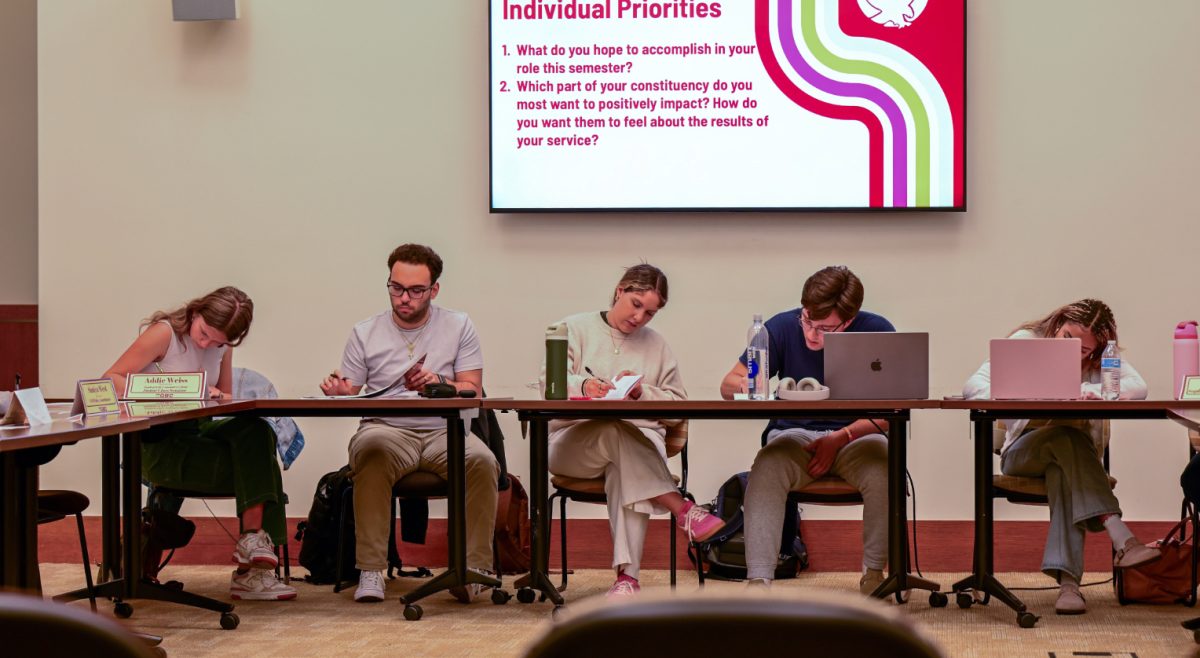Boston College hosted a virtual panel Monday evening to update the Boston College community with information regarding the origin, spread, and response to the novel coronavirus. The 90-minute-long webinar was hosted on Zoom and featured expert panelists in epidemiology and public health from BC and Boston University.
Philip Landrigan, a professor of biology and director of BC’s global public health and the common good program, said that it is “very likely” that the novel coronavirus was on BC’s campus while students were present.
“There is free movement into campus from Boston, Newton, and Brookline,” Landrigan said. “And it’s hard for me to believe that the virus is not already on the campus.”
Landrigan discussed preventive measures such as handwashing as well as the importance of workplace preparations in case of an outbreak. He said the best policy for prevention is to assume that everyone has the virus.
“All of us are obligated at every level of society to flatten the [epidemic] curve,” Landrigan said.
Davidson H. Hamer, professor of global health and medicine at BU, explained that the current origin theory among epidemiologists is that the novel coronavirus first appeared in bats, with pangolins as the intermediate hosts. The first recorded case of the disease being transmitted to a human has been traced to the Huanan Seafood Wholesale Market in Wuhan, China in late December 2019.
Transmission of the virus is possible through respiratory droplets and contact with infected surfaces, and it is transferable without symptoms, according to Hamer.
“There’s a question of whether it can be airborne, and that’s not really been documented,” Hamer said. “But clearly when somebody coughs and sneezes, it can stay in the air for a period of time in the absence of good ventilation. It can contaminate surfaces and survive on surfaces for various periods of time, and therefore, people have contacted those contaminated surfaces.”
He explained that epidemiologists estimate the basic reproductive number—or the expected number of cases generated by one case—to be between 1.4 and 6.49 for the novel coronavirus. To put that in perspective, Hamer said, the average reproductive number for the previous H1N1 pandemic was between 1.3 and 1.7.
Hamer also highlighted the symptoms of the novel coronavirus, noting that many patients are asymptomatic or only have a runny nose, and only 15 percent of patients develop severe symptoms.
The people at the greatest risk of contracting the novel coronavirus are those with cardiac or pulmonary disease, diabetes, or hypertension; older people; or anyone with cancer or an “immunocompromising condition,” he explained. Hamer also expressed concern about the well-being of health care professionals.
“Obviously health care workers, if there are not measures taken, are at risk. … There’s a clear age-related risk,” Hamer said.
Hamer explained that there are four “common” types of coronavirus, two of which display the same symptoms as the common cold and other viruses, and two which cause mild upper respiratory disease. Additionally, there are two other coronaviruses that have been the sources of smaller epidemics in the past, SARS-CoV and MERS-CoV.
“There are four that are pretty common—we actually have tests for them these days as part of respiratory panels and tests for multiple pathogens concurrently,” Hamer said. “Those are quite different from the current outbreak.”
Hamer stated that while there is no current vaccine for the novel coronavirus, there is a vaccine undergoing Phase I trials, and experts expect it to be ready for mass distribution in the next 12 to 18 months.
He emphasized that no antiviral agents are known to work against the coronavirus and antibiotics are not helpful. Hamer estimated that anywhere from half to two-thirds of the world’s population will eventually be infected.
“Supportive care is key,” Hamer said. “Really trying to monitor closely [the] keeping [of] patients in contact [with the virus] in airborne and respiratory isolation … especially for the protection of health care workers, but anybody else that may have contact with them.”
According to the Chinese Center for Disease Control and Prevention, the case fatality rate of the novel coronavirus ranges from 1.4 to 4.3 percent, while other nations such as South Korea report this statistic to be around 0.6 percent. Hamer said that these numbers should be considered estimations because the variation among them can be attributed to changes in the definition of COVID-19 and, subsequently, the evolving set of symptoms that doctors have looked for when classifying it.
“There can be a lag between the initial diagnosis, confirmation of infection, and determining the final outcome, which may be a few weeks later,” Hamer said. “So it really takes time to collect all the appropriate data.”
BC nursing professor Nadia Abuelezam mentioned that Hamer’s predicted estimate of the population that will contract the virus can be supported by mathematical models.
“[That] we might expect half to two-thirds of the world’s population to get this virus eventually is a number that’s coming out of mathematical models,” said Abuelezam. “Mathematical models are [a] really important part of our response to this pandemic. They might inform what we might do and how we might do it.”
Abuelezam explained that what makes this disease particularly dangerous is the gap in time between when someone has the virus and when someone displays symptoms.
She said that, at this time, epidemiologists do not know if people can be reinfected with the virus. She elaborated that social distancing or physical distancing could flatten the epidemic curve.
“The reason we’re having people self-quarantine for two weeks is really to avoid any potential transmission occurring in between this period between infectiousness and the onset of symptoms,” said Abuelezam.
When asked during the Q&A what the best estimate is for the end of this pandemic, Abuelezam stated that there is no way of knowing at this point and that we must prepare for preventive measures to be in place for a prolonged period of time.
“I can’t give an exact number. I don’t think anybody can give an exact number in terms of the number of weeks that we’re in for,” said Abuelezam. “But I can say that it’s likely going to be a longer time, and we may also expect that we will be having to do this physical distancing in waves. We may have to sort of lift some of the restrictions that we have now, but then we may have to reinstate them at some other point.”
Nahid Bhadelia, an assistant professor in the School of Medicine at BU, addressed the challenges that facilities will face in response to the novel coronavirus. She advised all workplaces to define what infrastructure they need and seek those supplies before the crisis worsens.
Bhadelia also expressed her worry about the medical infrastructure around the world, as some people may have very low access to care if they live in a community that has very few physicians.
“Even well-defined health care systems get to a point where they do not have the resilience or the reserves or the people or the staff or the space to be able to handle it,” Bhadelia said.
Bhadelia said she believes that the novel coronavirus presents a unique obstacle that will challenge our scientific knowledge, causing health care professionals to learn while treating patients. The response to this outbreak will remain fluid as new research and resources are made available daily. A possible obstacle to the treatment of the virus will be the ethics of researching the disease and the patients who have the disease simultaneously, according to Bhadelia.
“The other aspect of this is where the ethics of conducting research during an outbreak,” Bhadella said. “And then as you’re developing this clinical knowledge base, how do you take that and evolve and turn it into sort of good public health policy, because a scientific database is shifting.”
Bhadelia said she believes that despite the world’s extensive efforts to fight this virus, this is only the beginning of the pandemic.
She explained that in order to fight an emerging, infectious disease, patients must realize they are sick, and they must be able to receive care. Clinicians must be able to recognize an uncommon disease, and laboratories must have the ability to test an uncommon disease. On a broader level, the public health system must be functional enough to report the threat to the national governments who will assign priority and resources. International partners, including other nations or international organizations, must also be able to respond quickly.
“Our most precious resource is our health care workers.” Bhadelia said. “This has been true in every outbreak.”
Featured Image by Keara Hanlon for The Heights



















